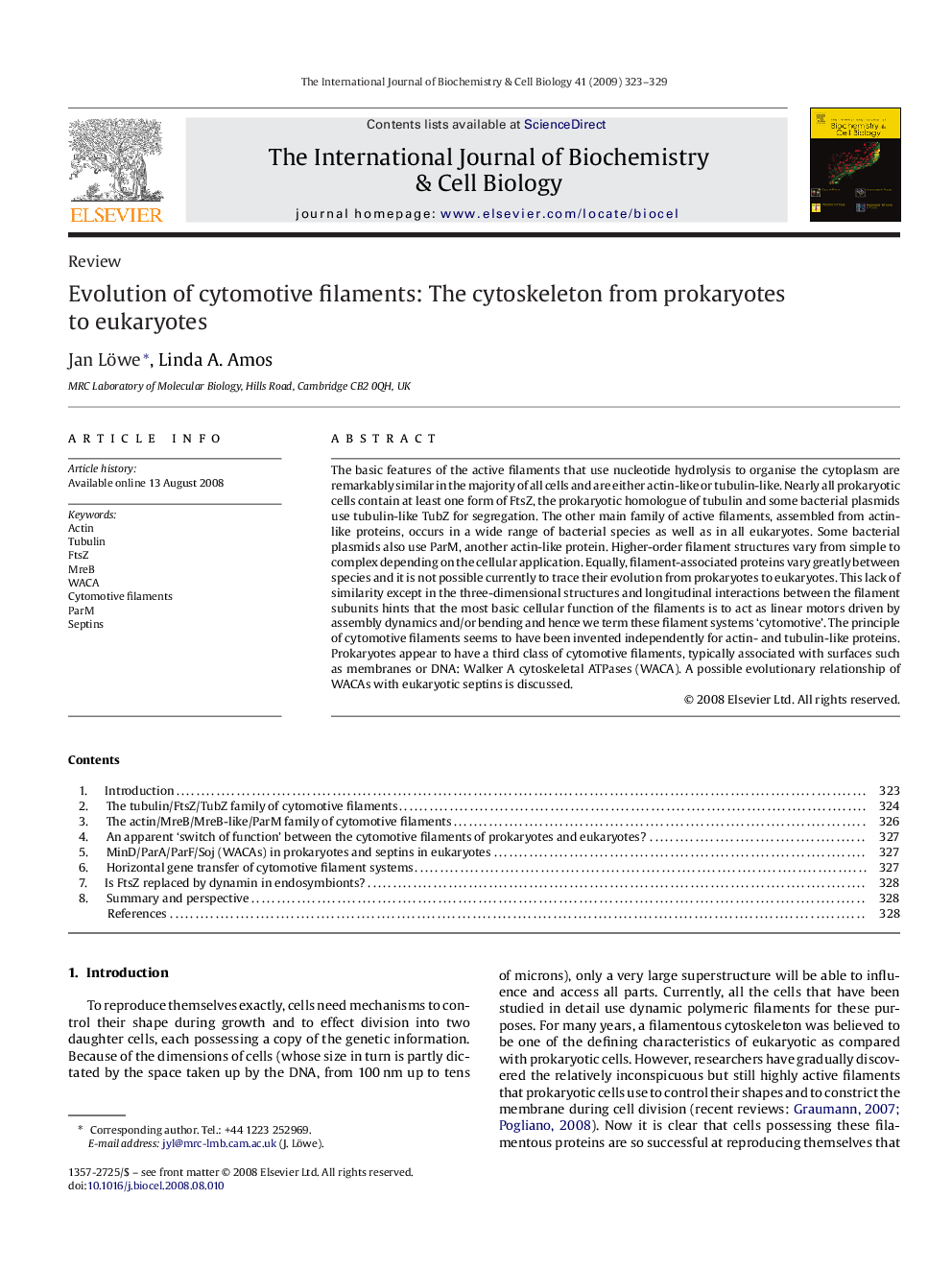| کد مقاله | کد نشریه | سال انتشار | مقاله انگلیسی | نسخه تمام متن |
|---|---|---|---|---|
| 1984278 | 1539956 | 2009 | 7 صفحه PDF | دانلود رایگان |

The basic features of the active filaments that use nucleotide hydrolysis to organise the cytoplasm are remarkably similar in the majority of all cells and are either actin-like or tubulin-like. Nearly all prokaryotic cells contain at least one form of FtsZ, the prokaryotic homologue of tubulin and some bacterial plasmids use tubulin-like TubZ for segregation. The other main family of active filaments, assembled from actin-like proteins, occurs in a wide range of bacterial species as well as in all eukaryotes. Some bacterial plasmids also use ParM, another actin-like protein. Higher-order filament structures vary from simple to complex depending on the cellular application. Equally, filament-associated proteins vary greatly between species and it is not possible currently to trace their evolution from prokaryotes to eukaryotes. This lack of similarity except in the three-dimensional structures and longitudinal interactions between the filament subunits hints that the most basic cellular function of the filaments is to act as linear motors driven by assembly dynamics and/or bending and hence we term these filament systems ‘cytomotive’. The principle of cytomotive filaments seems to have been invented independently for actin- and tubulin-like proteins. Prokaryotes appear to have a third class of cytomotive filaments, typically associated with surfaces such as membranes or DNA: Walker A cytoskeletal ATPases (WACA). A possible evolutionary relationship of WACAs with eukaryotic septins is discussed.
Journal: The International Journal of Biochemistry & Cell Biology - Volume 41, Issue 2, February 2009, Pages 323–329